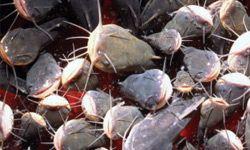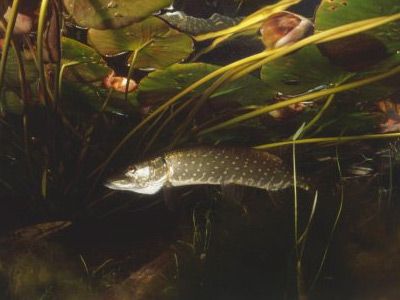When it's time to spawn, bass mean business. As a rule, they don't waste a lot time. In fact, the entire spawning process, which involves building a nest, finding a mate, hatching fertilized eggs and guarding young fish until they are ready to be on their own, can take a little as three weeks.
When winter ends and the water warms back up, bass feel the urge to spawn. At this time, male fish will find a suitable nesting area and prepare it for mating. Then the male bass circles the humble home slowly and waits for a mate. When a female has chosen to join the male in the nest, they waste little time getting to know one another.
Advertisement
The mating process begins with the two bass swimming right next to each other around the nest. While swimming, the bass are tilted on their sides with their vents closed. Simultaneously, they release their respective eggs or sperm into the nest. With the female's role in this spawning over, she's free to leave the spawning area or mate with a new fish.
The male bass is responsible for watching over his school of offspring. He'll stay close and protect the eggs from harm until they hatch a few days later. After hatching, the young spawn will spend about two weeks growing and learning what to eat. Then they'll disperse and leave the male free to mate again or head to warmer waters [source: Davis].
Read on to find out exactly when and where the magic happens.
Advertisement



